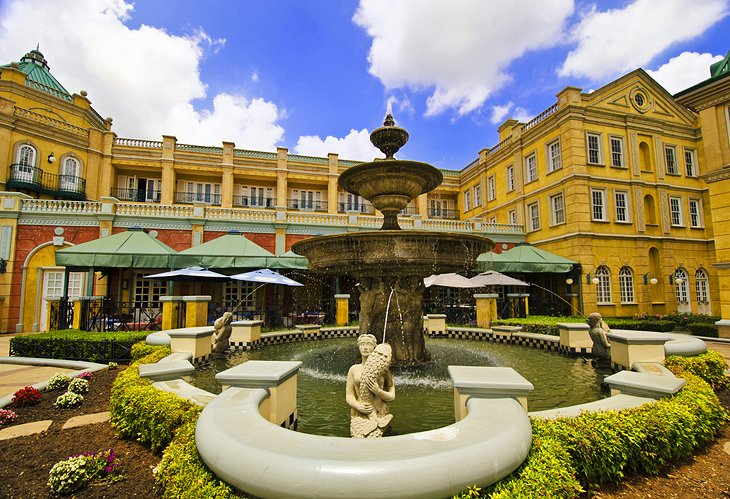All About Johannesburg North Attractions
4 Simple Techniques For Johannesburg North Attractions
Table of ContentsThe 7-Second Trick For Johannesburg North AttractionsThe Ultimate Guide To Johannesburg North Attractions9 Easy Facts About Johannesburg North Attractions ExplainedUnknown Facts About Johannesburg North AttractionsThe Single Strategy To Use For Johannesburg North AttractionsSome Known Details About Johannesburg North Attractions The Of Johannesburg North Attractions
Nonetheless you need to maintain safety and security in mind and travelers need to stay alert whatsoever times when in unfamiliar surroundings. Speak to the locals when you remain in community to discover the location you are staying in. Johannesburg North attractions. When on the street (this does not relate to shopping malls and other safe atmospheres) finest basic guidance is to attempt your finest to appear like a regional and to stay clear of displaying any kind of kind of wealth
All About Johannesburg North Attractions
Professor Revil Mason O. J. (Thomson, 1946) checked out the Witwatersrand's pre-colonial history. His archaeological job blew up the 'em pty land' misconception, according to which the area was devoid of human habitation before the arrival of European settlers. In his magazines Prehistory of the Transvaal: A Record of Human Task (1962) and Origins of Black Individuals of Johannesburg and the Southern Western Central Transvaal Advertisement 3501880 (1986 ), Professor Mason showed the extent of social and financial growth in the location before Europeans established foot right here.

The Only Guide to Johannesburg North Attractions
In 1878, David Wardrop found gold in quartz veins at Zwartkop, north of Krugersdorp. In 1881, Stephanus Minnaar came throughout gold on the farm Kromdraai, near the Cradle of Mankind.
In March 1886, a protrusion (soon to be called the Main Reef) was found, quite luckily, on Gerhardus Oosthuizen's farm Langlaagte. Some state that the Lancastrian coal miner George Walker discovered this reef. One more travelling English prospector, George Harrison (that had actually formerly operated in Australian mines) acquired a prospecting permit in respect of Langlaagte in Might 1886.
He decided to carry on in a mission for greener fields, and disposed of his Langlaagte case for the baronial amount of 10. Alas: beneath lay the richest goldfield ever located. The discovery of this rich auriferous coral reef prompted a gold rush that signalled completion of agrarian serenity in the southern Transvaal.
It would certainly, within six years, come to be the largest town in southern Africa. Within a years, it would make the Z. A. R. till after that an anarchical and bankrupt little state the most affluent country in Africa. By the millenium, the Z. A. R. was to go beyond Russia, Australia and the United States of America to end up being the world's leading gold manufacturer, generating more than a quarter of the globe's gold.
The Greatest Guide To Johannesburg North Attractions
It was called Ferreira's Camp, called after Colonel Ignatius Ferreira. He was a Boer adventurer upon whom the British authorities had presented the standing of Friend of the Most Differentiated Order of St Michael and St George (qualifying him to the post-nominal letters C. M. G.) in appreciation for his role in the war that had deposed the Pedi king Sekhukhune in 1879.
Quickly the camp was including tents and wagons as beginners showed up daily from everywhere. By September 1886, some 400 people lived in Ferreira's Camp, which quickly boasted built iron and lumber buildings. Two other camps were established: Meyer's Camp on the farm Doornfontein, and Discover More Here Paarl Camp. The latter was nicknamed Afrikander Camp; lots of people from the Cape Swarm resolved there.

8 Easy Facts About Johannesburg North Attractions Shown
This name obtained currency by word of mouth, such that the State Secretary attested the name to the Mining Commissioner on 9 October 1886. Stands in the town were auctioned on 8 December 1886. While some stands were marketed for 10, others were torn down for just sixpence.
Two years later on, these erven were to alter hands for as much as 750 each. The tented camps diminished as a dorp of corrugated iron structures developed and expanded north of the mines located along the Main Coral Reef Roadway. Locations such as Jeppe's Community (where go to this web-site working-class immigrants erected their dwellings) and Doornfontein (where the affluent brand-new 'Randlords' began to create their opulent homes) were quickly included to the ever-expanding map of the town.
8 Simple Techniques For Johannesburg North Attractions
Aside from the road names, there were no signs of Johannesburg being located in a Dutch-speaking country. Several years later on, C. W. Kearns O. J. (among the first boys enrolled at St John's University in 1898) would remember: 'An unusual reality regarding Johannesburg was that, although it remained in the [Boer Republic], almost every person talked English and even the Federal government slaves attended to one in English, unless they were very first dealt with in the Taal (or Reduced Dutch)'.
Britain had a rate of interest in making certain optimal problems for gold production on the Witwatersrand, and that the gold was exported to London rather than Berlin a vital provided all the much more clamant by the Z. A. R.'s increasing toenadering with Germany. more Mine owners were on a clash with President Kruger, whose policy of monopolistic concessions (commonly given to his cronies) avoided mining business from acquiring materials of products (specifically dynamite) and work by themselves, less costly terms
Not known Factual Statements About Johannesburg North Attractions
In 1890, the Volksraad had restricted the franchise to white guys that had lived in the Z. A. R. for fourteen years or longer, hence disqualifying the majority of the immigrants (who occurred to be the major contributors to the fiscus). Nonetheless, anxiety for the vote was a mere pretense for advertising a various schedule; most uitlanders concerned themselves as short-term site visitors and had no objective of staying in the Z.